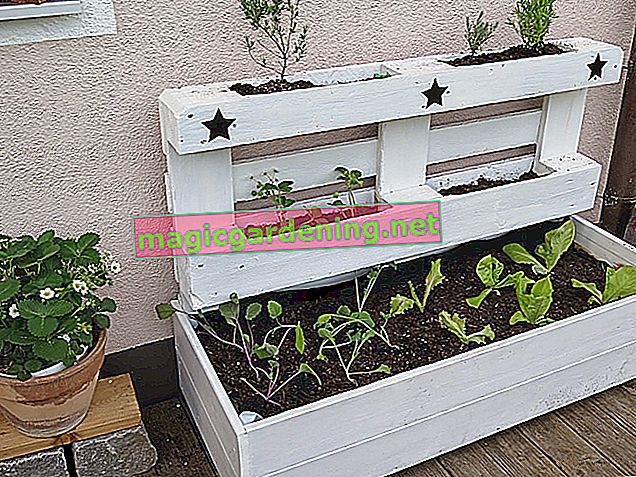
How much water does the gladiolus need?
Gladioli are quite thirsty and need to be watered regularly, especially on hot summer days. The following applies:
- Water whenever the top inches of the soil feel dry. This can be necessary twice a day on hot days.
- Avoid waterlogging, as this causes the onions to rot quickly.
- So loosen up heavy soils with a little sand when planting.
- Mulch the earth so that the moisture does not evaporate so quickly.
also read
- Awaken gladioli early by pulling them forward
- Gladioli in a bucket - attractive jewelry for the balcony and terrace
- The Changing Rose: Valuable Care Tips
When is fertilization carried out?
If you have already enriched the garden soil with some compost or manure when planting the gladiolus, it is sufficient to fertilize the plants for the first time four weeks later. A second application of fertilizer takes place after eight weeks. Use commercially available long-term bloom fertilizers. This contains all the nutrients the gladiolus needs for healthy growth and abundance of flowers.
How is it cut?
As soon as the flower stalk has completely faded, the faded parts are shortened to the base of the leaves. Do not cut back the green of the gladiolus completely until the leaves have become very yellowed and unsightly. This means that the onion can continue to grow and during this time it stores important nutrients for the next year.
If you cut gladioli for the vase, you should always leave three to many petals on the bulb. If the stem is cut directly above the ground, for example because you need the full length for a vase, it can happen that the bulb plant dies.
How are gladioli overwintered?
Gladioli are not hardy and must be overwintered indoors. In autumn, the tubers are dug up and dried well and stored in a cool but frost-free room.
What pests and diseases can attack the plant
Newly bred gladiolus varieties are often attacked by thrips. These insect pests, also known as bladder feet or fringed wings, are between one and three millimeters in size and feed on the plant sap. As a result, they damage the gladiolus so much that it can wither.
You can recognize the infestation by the silvery stripes along the leaves and flowers. Since the pests migrate over the outer bracts into the tubers during the winter, the Federal Association of German Gardening Friends recommends cutting off the infested gladioli close to the ground. Most of the time, the onion sprouts healthy again.
If your gladioli are repeatedly attacked by the animals, you can put the bulbs in an insecticide solution that is effective against the pests before planting them.
Tips
In the case of large-flowered gladioli, it is advisable to support them so that the flower stalks do not kink. Special bamboo or plant poles, which are hardly noticeable due to their natural color, are well suited.








